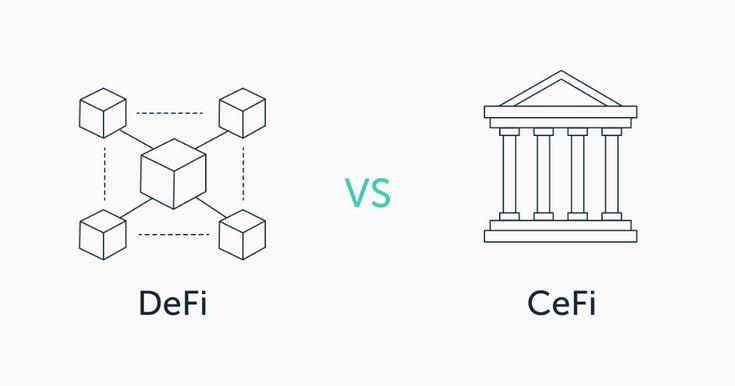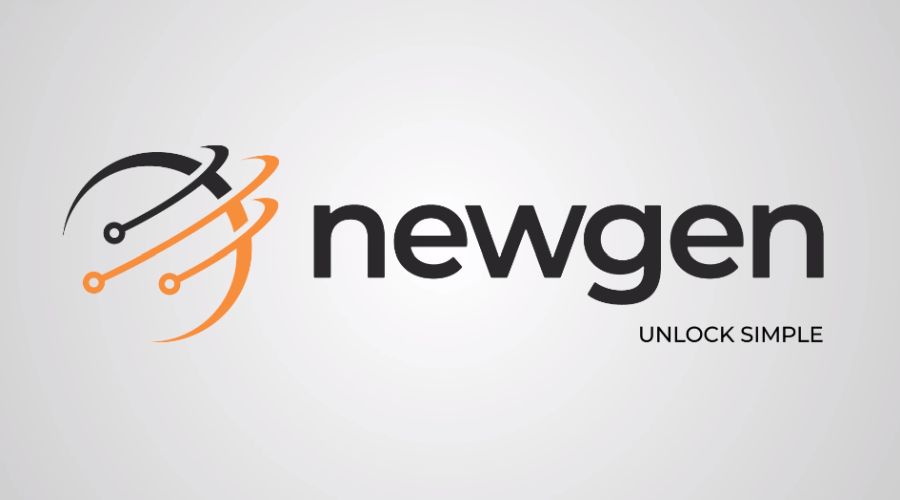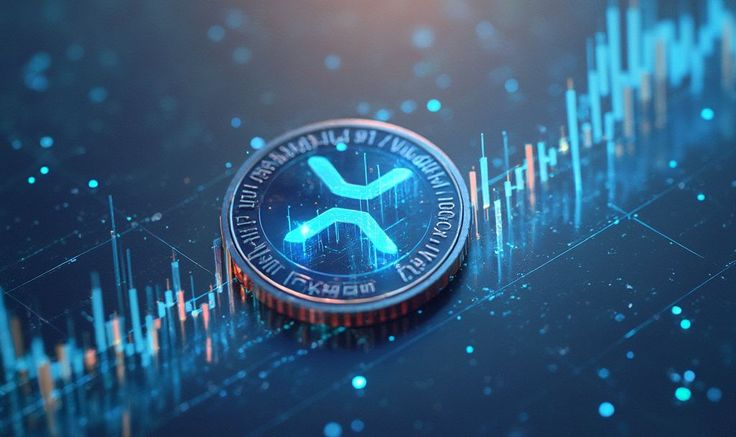DeFi lending has seen massive growth as borrowing rose by 959% since 2022, hitting $19.1 billion by 2024. But even with that growth, centralized finance (CeFi) is still in charge, handling nearly 89% of crypto lending through big players like Tether and Galaxy 211.
At the same time, the trading activity within the sector relies heavily on centralized exchanges such as Binance and Coinbase, who still retain user trust and actively provide liquidity within the system.
The ultimate question right now is if DeFi will completely take over, or if CeFi will integrate smart contracts and cross-chain technologies to maintain dominance. perhaps both will merge into a new kind of financial system.
Understanding CeFi and DeFi
The CeFi model with custodial wallets permits trading on platforms such as Binance and Coinbase that act as intermediaries for their customers’ crypto-assets. They maintain crypto for their customers, transact on their behalf, and perform KYC screening and other compliance obligations.
They act as quasi-banks in the crypto universe, supporting fast transactions supported by user-friendly interfaces, in addition to trust from financial intermediaries. But if the platform suffers a hack (Mt. Gox in 2014) or goes bankrupt (Celsius in 2022), it places user’s funds at risk.
Despite this, they still control the vast majority of trading volume as users express preference for, ease of use, and high liquidity.
Decentralized Finance (Defi), in contrast, eliminates intermediaries. Order and lending Apps such as Uniswap and Aave are operated by code and not by people.
You can hold your crypto assets in wallets such as MetaMask and control them directly through interaction with self-executing contracts encompassing smart contracts which reside on blockchains.
Without the need for sign-ups, access is unrestricted. In addition to being able to audit all transactions, Defi does not come without risk. The PolyNetwork hack of 613 million in assets illustrated some inherent dangers to a trustless design. As Defi grows (TVL projected to hit 100B in 2024 per DefiLlama), its complexity puts away most mainstream users.
How Centralized Exchanges Are Blending DeFi Features to Stay Ahead
Centralized exchanges like Binance, Coinbase, and Kraken are blending DeFi tools into their platforms to stay relevant, attract users, and navigate growing regulatory pressure.
Binance: Launching BNB Chain and DeFi Staking
Binance created its own blockchain ‘BNB’ Chain in 2020, to challenge Ethereum’s lead in DeFi. It hosts 1,300+ dApps like PancakeSwap allowing users to earn rewards through DeFi-style staking without ever leaving Binance’s app. That way, people can farm yields and use decentralized apps more easily.
The BNB Chain is constantly updated every 2-3 months to keep up with competitors and has attracted $6.5B in TV. But some say it is not really decentralized since Binance still controls most of it behind the scenes. So even though it feels like DeFi, critics argue it’s just centralized finance wearing a DeFi mask.
Coinbase: DeFi Wallets & Cross-Chain Support
Coinbase introduced a DeFi Wallet in 2022 and launched Base, an Ethereum Layer-2 network, in 2023. With this, users interact with DeFi apps like Uniswap while staying within Coinbase’s platform, catering to user demand for NFTs and DeFi yields (5-8% APY on ETH). Base also serves as regulatory arbitrage, framing Coinbase as a neutral tech provider to dodge SEC scrutiny.
While Base’s TVL hit $1.8B in 2024, it lags behind Ethereum, highlighting challenges in converting CeFi’s 43M users to DeFi. Critics call it a “walled garden” masking centralization
Kraken: Decentralized Lending Products
Kraken’s 2023 “Pro” platform uses smart contracts for decentralized lending, mimicking DeFi protocols like Aave to offer users up to 12% APY on BTC.
This hybrid model blends DeFi’s transparency with Kraken’s CeFi oversight (e.g., vetting borrowers) to meet user demand for higher yields.
However, the SEC sued Kraken in 2023 for offering unregistered securities, showing regulators still target hybrid models.
Despite Kraken’s attempt at regulatory arbitrage, its lending TVL remains modest at $320M in 2024, reflecting skepticism about “DeFi-washing” centralized platforms
Hybrid Models: Wrapped Bitcoin & Fireblocks
Hybrid models that merge centralized and decentralized features have gained traction in the crypto space, offering the security of CeFi with the innovation of DeFi. One prominent example of a hybrid is:
Wrapped Bitcoin (WBTC)
WBTC bridges Bitcoin to DeFi by tokenizing BTC into an Ethereum-compatible asset. Managed by BitGo (custodian) and decentralized networks, it lets Bitcoin holders earn DeFi yields on platforms like Aave.
By 2024, WBTC’s supply hit 250,000 BTC ($15B), dominating 65% of Bitcoin-DeFi activity. However, critics warn of centralization: BitGo controls custodial reserves, creating a single point of failure.
Regulatory scrutiny also looms which means authorities could target issuers for unlicensed securities. Still, WBTC’s success shows demand for hybrids that merge CeFi’s trust with DeFi’s flexibility
Fireblocks’ Institutional DeFi Tools
Fireblocks, a CeFi infrastructure leader, equips institutions like BNY Mellon with tools to access DeFi safely. Its MPC wallets and compliance APIs let banks trade on Uniswap or lend on Compound without self-custody risks. By 2024, Fireblocks connected 1,800+ institutions to DeFi, driving institutional TVL to $12B. But critics argue that “CeFi-ified DeFi” dilutes decentralization.
Fireblocks controls transaction routing and KYC checks. Yet it’s a gateway as 80% of their clients now use DeFi, proving hybrids can onboard cautious institutions.
What’s Holding DeFi Back from Total Takeover?
DeFi is evolving rapidly, but can it truly dethrone CeFi? Let’s break down its explosive growth, stubborn limitations, and groundbreaking innovations reshaping finance.
Growth Metrics
DeFi’s Total Value Locked (TVL) surged to 98B in 2024, driven by liquid staking (e.g. Lido’s35B ETH). and real-world asset (RWA) tokenization.
User adoption hit 10M+ unique wallets, while institutions like Fidelity and BlackRock allocated 5-10% of crypto portfolios to DeFi yields. Even legacy banks like JPMorgan now use DeFi for cross-border settlements via blockchain interoperability. But DeFi still trails CeFi’s $2T+ crypto trading volume, showing dominance in niches, not mass adoption.
Limitations
DeFi’s Achilles’ heel? User experience. Newcomers struggle with seed phrases, gas fees, and bridge hacks as 30% of users abandon DeFi apps after one transaction.
Scalability remains a hurdle as Ethereum processes 15 transactions/second vs. Visa’s 24,000, despite Layer-2 help. Insurance is scarce, only 2% of DeFi TVL is covered against hacks like Euler Finance’s $197M exploit (Nexus Mutual).
Meanwhile, CeFi’s custodial safety nets (e.g., FDIC insurance for USD deposits) keep risk-averse users loyal.
Innovations
DeFi is countering its weaknesses with groundbreaking upgrades. Layer-2 solutions like Arbitrum and Optimism slash Ethereum fees by 90% while handling over 50% of DeFi volume, making swaps and staking accessible to retail users.
Furthermore, Decentralized identity tools, such as Ethereum Name Service (ENS), replace clunky wallet addresses with human-readable names (e.g., vitalik.eth), while ERC-4337 “smart accounts” enable social recovery for lost keys fixing UX pain points.
Meanwhile, real-world assets (RWAs) like tokenized U.S. treasuries (e.g., MakerDAO’s $3B DAI reserves) attract institutions craving yield beyond crypto. However, DeFi must fix UX and regulation to truly compete.
CeFi’s Regulatory Edge vs. DeFi’s Dilemma
As CeFi and DeFi clash, regulators are drawing battle lines. Can decentralized protocols evade oversight, or will compliance crush innovation? Here’s how the fight is unfolding and what’s next.
CeFi’s Advantage
Centralized platforms like Coinbase and Binance thrive under regulation. Their KYC/AML frameworks satisfy agencies like the SEC and FATF, enabling fiat integrations (e.g., USD deposits) and institutional partnerships.
For example, Coinbase’s MiCA-compliant structure in the EU lets it operate as a licensed custodian, avoiding the $4.3B fines Binance faced in 2023.
CeFi’s compliance also reassures users as 72% of traders prefer platforms with FDIC-insured USD wallets. But this comes at a cost, CeFi’s innovation lags as lawyers dictate product roadmaps.
DeFi’s Dilemma
DeFi’s “code is law” ethos clashes with regulators. The SEC sued Uniswap in 2024, alleging its DEX operates as an unregistered exchange.
Similarly, the CFTC fined decentralized protocol Opyn $250K for offering illegal derivatives. The core issue: DeFi’s lack of formal entities or KYC makes enforcement messy.
Even “decentralized” projects aren’t safe, the SEC claims governance tokens (e.g., UNI) are securities. Tornado Cash’s 2023 OFAC sanctions show regulators will target infrastructure, not just people. DeFi’s TVL dropped 15% post-lawsuits as developers flee to offshore DAOs.
Future Outlook
The EU’s MiCA (2024) mandates DeFi-like transparency for CeFi but exempts “fully decentralized” projects, a loophole platforms may exploit.
In the U.S., the FIT21 bill (2024) classifies most tokens as commodities, shielding DeFi from SEC overreach. Meanwhile, global bodies like the IMF push for “travel rule” compliance on chains, threatening DeFi’s anonymity.
The endgame? Hybrid regulation: CeFi handles mainstream finance, DeFi becomes a sandbox for innovators. But as SEC Chair Gensler warns, “Most tokens are securities, even if they’re on a blockchain.






